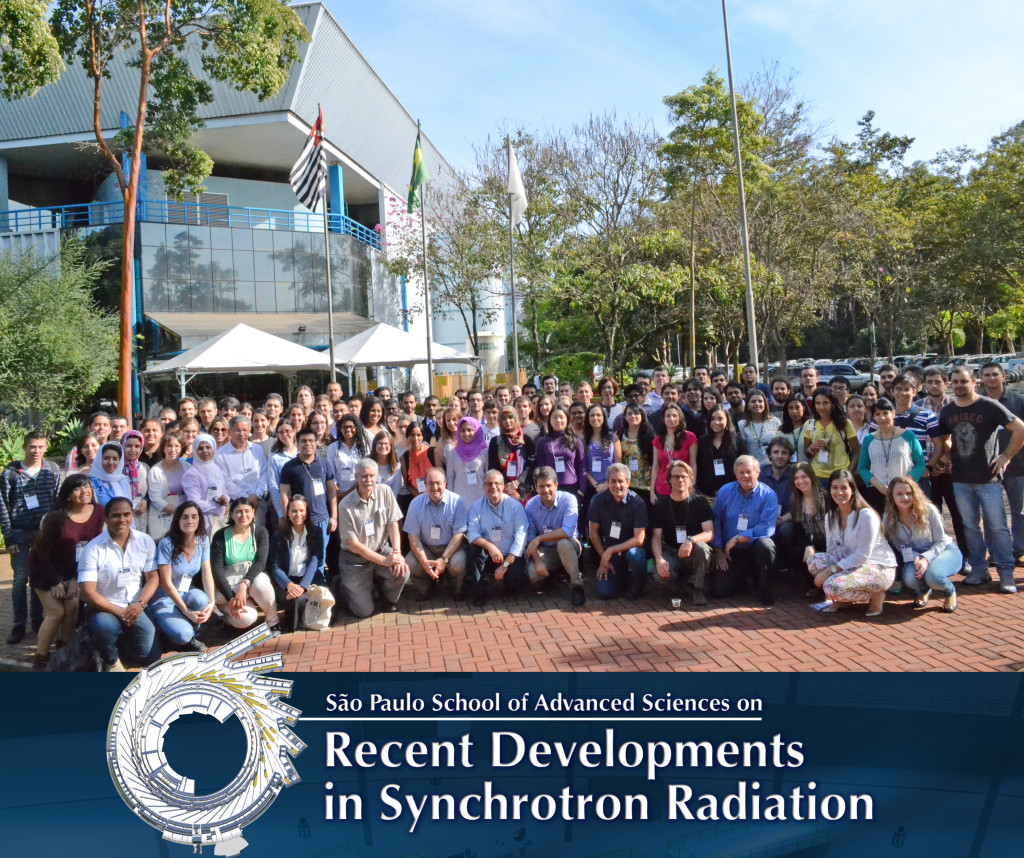SyncLight 2015, the São Paulo School of Advanced Sciences (ESPCA) on Recent Developments in Synchrotron Radiation was held at the Brazilian Synchrotron Light Laboratory (LNLS) in Campinas, São Paulo, Brazil, between July 13 and 24, 2015.
SyncLight 2015 brought 96 graduate students and young postdoctoral researchers from Brazil and 16 other countries together. In total, 27 different nationalities were represented. The school was sponsored by the São Paulo State’s Research Foundation (FAPESP) and organized jointly by the LNLS and the American Physical Society (APS). The instructors were selected from currently active and leading researchers around the world.
São Paulo School of Advanced Science (ESPCA) is a program of FAPESP that offers short courses on advanced science and technology in order to contribute for the academic development of the participants and to consolidate the state of São Paulo as a polo of attraction for world-class scientific talents.
The main goal of the SyncLight 2015 was to show to young researchers (MSc, PhD and Post-doc fellows) what synchrotron light offers in the form of new tools for their research. During the school, the students were presented to the numerous new experimental possibilities that appeared in the last decade, particularly those exploring bright nanometer size x-ray beams and coherence.
The chosen venue seems particularly appropriate because LNLS is currently engaged in the development and construction of Sirius, the next Brazilian synchrotron light source. It is planned to be a state-of-the-art machine, designed to be one of the brightest in the world. A new generation of users and developers are needed to exploit this new source that will be operating in 2018.
This school provided training for the students in the field of physics, chemistry, biology, geosciences, medicine and materials science engineering, among others. The specific interdisciplinary character of the school contributed to fruitful exchanges between researchers belonging to these different disciplines.
